Deborah Atkinson, founder of Flipping 50 and social media influencer, is here to report that everything you think you know about exercise could be wrong – and preventing you from getting into or staying in shape in your fifties. “As a young adult, you learned that cardiovascular exercise was actually the bomb. Cardiovascular exercise helped you burn calories, and if you wanted muscle tone and you wanted to be lean or to lose fat, that was actually the ticket to helping you do so,” she says, going on to reveal the truth about cardio exercise.
She Relied on Cardio When She Was Younger
“Back in the day, I loved cardiovascular exercise. I actually started teaching aerobics back in the day when it was high impact, and then it was low impact, and then it became step aerobics, and then it became slide and spinning and all of the other options, and then we blurred them all together and did fusion classes and kickboxing and spinning and everything all at once. So if you can relate to that, we are of the same era, girlfriend,” she says in the video.
The Fallacy She Believed? Burning Calories Led to Fat Loss
“Here's what we used to think. We used to believe that burning calories led to fat loss; burning calories was the key,” she says. “Here's the challenge with that. It's not about calories alone.”
Hormones Are Also Part of the Equation
 Shutterstock
Shutterstock
“What we wanna consider is that it's hormones that determine the calories that you eat or the calories that you expend, how your body deals with that, whether that encourages more fat burning or it encourages more fat storage,” she explains.
As You Age, Your Body Doesn’t Handle Stress the Same Way
 Shutterstock
Shutterstock
She explains that as you get older, your body doesn’t handle stressors the same way. “So now we reduce the overall stress load, those things all affect the stress impact,” she says. “And let me just suggest to you that in midlife and beyond, but particularly if you're just approaching menopause or you're just after menopause, that is when we're really in what we call menopause transition. It's a more volatile stage. We don't handle extra stressors really well right then because our hormones have changed, and many of them have declined.”
Cortisol Spikes Lead to Weight Gain
 Shutterstock
Shutterstock
“When that happens, cortisol goes up, we don't handle it as well because we're dealing with more relative to what we did when we were 20 or 30, even 40. So many of you may have entered perimenopause in your forties, but it probably wasn't at its height. That late-stage perimenopause is just a little bit more detrimental to your hormones. That's the time when you may want to take some of that really high-impact and high-intensity exercise and transition to doing more walking and moving. Not that you can't do little bits of that high-intensity exercise, but you don't wanna do more of it,” she says.
HIIT Might Burn More Fat But Is More Stressful for Your Body
“High-intensity interval training is known to burn more fat or, at least after the fact, burn more fat. But if you're already stressed, doing high-intensity exercises is more stressful to your body than doing lower-intensity movements like going for a walk or doing yoga. And at that moment when you're already stressed from relationships, work, finances, and your schedule preparing for good things like weddings and celebrations, you may need yoga. And that actually may help you rebalance hormones to the effect that what you're doing is enabling more fat loss because you have to take away the gait,” she says.
Stress Will Make Your Body Hold Onto Fat
 Shutterstock
Shutterstock
“You have to take away what's in the way. And if you're under stress, a lot of stress will make your body hold onto fat. It's self-preservation, and it started centuries ago. But we still are always going to have that just because it's evolution, and it's coming with us even though we're well beyond that.”
Eve Thought She Loves Exercise, She Still Understands the Importance of Lower Impact Workouts
 Shutterstock
Shutterstock
She also admits that she loves to exercise a little bit on the more side, “more than many people do. But I've also realized that I can no longer do it right now. My body is just saying you're going to do better going for walks, hiking, and strength training than if you try another endurance triathlon. That's not going to work well for you,” she says.
She Gained Inflammation Weight During an Endurance Event
 Shutterstock
Shutterstock
She also reveals that she “gained between 12 and 14 pounds of inflammation during my last endurance event, so that ‘more’ formula wasn't working for me. So I want you to think about that.”
She Recommends Workouts That Offer Endorphins
 Shutterstock
Shutterstock
“We think burning calories is the answer. It's not the only answer. And really, it's not the best use or application of exercise. What I want you to do is think of activities that you love. Because loving something means you're spinning off more endorphins, you're getting more oxytocin and serotonin. Those are a few good things that happen when you hold somebody's hand, hug somebody, or have sex, and you can make that happen through exercise that you enjoy as well. It doesn't happen from exercise for which you hold yourself accountable.”
Cardio Will Burn More Calories in the Moment, But Long Term, Strength Training Will Burn More
 Shutterstock
Shutterstock
“If we say 30 minutes of strength training and 30 minutes of cardiovascular activity, there is no question that you'll win. If you say which one is going to burn more calories, And you said cardio, it absolutely will. But here's the deal: it doesn't do it long-term. You have to have another fix of that cardio in order to do the same good that around the clock for up to 48 hours after you strength train; your body is just burning more calories,” she says.
You Will Even Burn Calories in Your Sleep
“Standing here, sitting here, going for a walk, sleeping, reading a book, all of that encourages the afterburn that happens 'cause your body's doing more repair after strength training than a cardiovascular workout,” she says.
Building Muscle Also Helps with Strength and Definition
 Shutterstock
Shutterstock
“Point number two: We also think if we're, we wanna be toned and defined that we should do more cardiovascular exercise as if we got it. Again, it comes back to thinking we need to burn those calories. But to get tone and definition requires muscle. There is no difference when you say I want tone and I want definition. You're also saying to me, I want muscle. And you may think, no, I don't want to gain any muscle. I want to lose fat so I can see the muscle. It won't happen like that after 40. It won't happen like that, even more after 50 and 60. Absolutely. Game over. We're done with that. That ship sails. You actually got away with it. It wasn't working that well when you were 30 or 40, but you won't get away with it now,” she says.
Tone and Definition Come From Lean Muscle
 Shutterstock
Shutterstock
“It's really important that you're considering tone and definition comes from lean muscle. And what that lean muscle again is coming back to the calorie burn. We want to elevate calorie burn around the clock when we're at rest when we're cleaning the house, we're cooking dinner, we're sleeping, we're at rest, we're driving in the car, you have more lean muscle mass. And that's not, you have more size than it. They're not synonymous. Actually, if you have more lean muscle mass, it's more compact. So it's actually probably going to be a smaller size,” she says.
Your Clothes Might Fit Differently – Even if the Scale Doesn’t Move
 Shutterstock
Shutterstock
Even if the scale doesn’t move, your clothes will fit differently. “What I call that is a poor woman's way to measure body composition,” she says.
Don’t Just Look at Your Weight, But Body Fat Percentage
 Shutterstock
Shutterstock
“If you don't have a smart scale, ideally, you get one,” she says, emphasizing the importance of body fat percentage over pounds. “We wanna be doing everything we can to preserve that lean muscle mass because then we're preserving our strength, our stamina, our endurance, our desire to do more all the rest of the day with energy.”
Strength Train Two or Three Times a Week and Make Sure to Rest
You don’t need to lift weights five times a week. “You want twice weekly,” she says. If you do three, make sure to give yourself a lot of time to rest and recover between.
Do Functional Movement
 Shutterstock
Shutterstock
“What's really important is that you have the recovery time between, and when you do functional work, it's a little bit lighter. You've got more things going on. It has more engagement for all muscles,” she says.
RELATED:I Got Into the Best Shape of My Life at 50 by Following These 6 "Basics"
This Gives You The “Best of Both Worlds”
 Shutterstock
Shutterstock
“But these two anchors, when you're going a little bit heavier, actually boost your metabolism a little bit more. So now we have the best of both worlds. We're going to enhance your mobility, your ability to create more movement instances comfortably every day, all day,” she says.
It Will Boost Your Metabolism
 Shutterstock
Shutterstock
“We're going to boost your metabolism. You are going to be a much more happy camper. Right away, you're going to start feeling stronger, start seeing more definition, and have a better appetite because you've got more lean muscle mass. And when I say better appetite, hungry at meals, not hungry in between, that's better appetite. You shouldn't have cravings.”
Movement Will Become More “Comfortable”
 Shutterstock
Shutterstock
“When you're exercising in your sweet spot, and you have more function, you can easily rotate. Movement becomes more comfortable. So you can lift heavier these days, which makes your metabolism matter. That's a really important piece of looking at the whole picture,” she says.
RELATED:I'm 50+ and These 7 Fat-Blasting Habits Keep Me in the Best Shape of My Life
Never Skip Strength Training, But Try and Do Both
 Shutterstock
Shutterstock
“Cardiovascular exercise burns more calories, but then you're done, and you pretty much recover from strength training. You burn fewer during that session, but you burn them around the clock for up to 48 hours, just a little bit, but for a much longer period of time. It adds up over time to be much better. So your odds are going with strength training every single time that you are choosing between: should I do strength or should I do cardio? I'm due for both. I always do strength. Never skip that,” she says.
Focus on the Long Term
Again, focus on the long-term. “It's not just what you burn during the exercise. It's what you burn around the clock that's going to matter to weight loss,” she says.
Think About Your Blood Sugar Spikes
 Shutterstock
Shutterstock
“It's really important that if you're looking at weight loss, we need to look at what happens to you around the clock and how we are helping you utilize blood sugar. So, every time you eat, your blood sugar goes up. If we can keep it from going way up, we just get a little bump, we come back down, we're back into fat-burning mode, and our foot goes way up and stays way up. So does your insulin. And that puts you in fat storage,” she says.
RELATED: 3 New Ozempic and Wegovy Side Effects
She Wishes She Knew This When She Was Younger
“You may be thinking, my pants are too tight, and I get it, but this is a two-for-one – strength training really is the best answer. Now I wish I'd have known this when I was a trainer, a fitness instructor in my twenties, then a trainer in my late twenties and early thirties just starting out,” she says. And if you enjoyed this article, take advantage of these 20 Superfoods for People Over 50.

















 Shutterstock
Shutterstock Shutterstock
Shutterstock Shuttestock
Shuttestock Shutterstock
Shutterstock Shutterstock
Shutterstock Shutterstock
Shutterstock Shutterstock
Shutterstock Shutterstock
Shutterstock
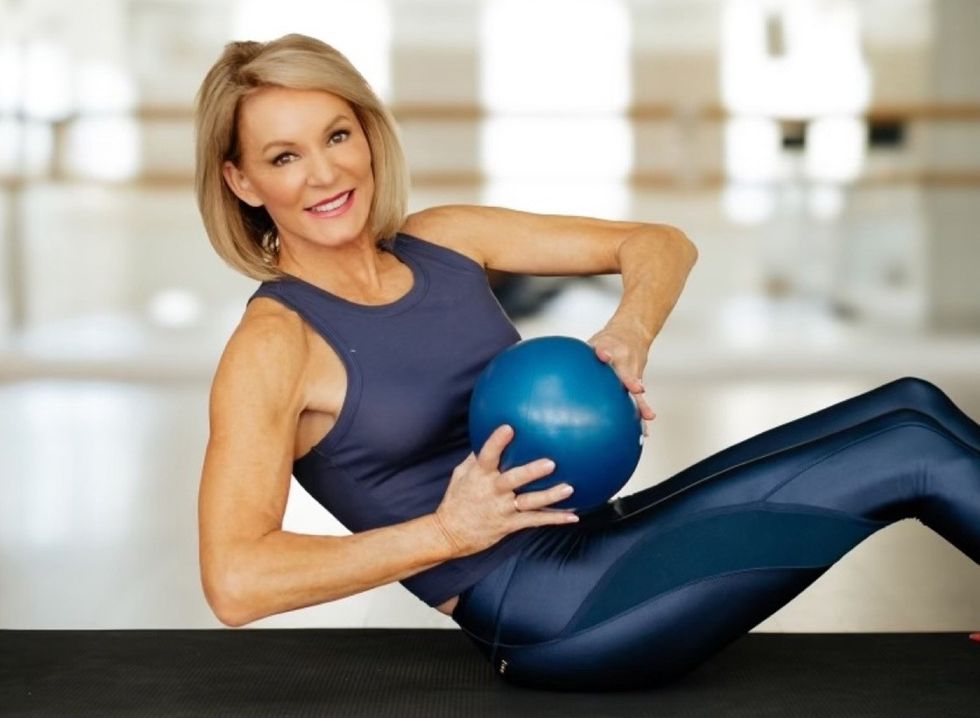 Liz Hilliard
Liz Hilliard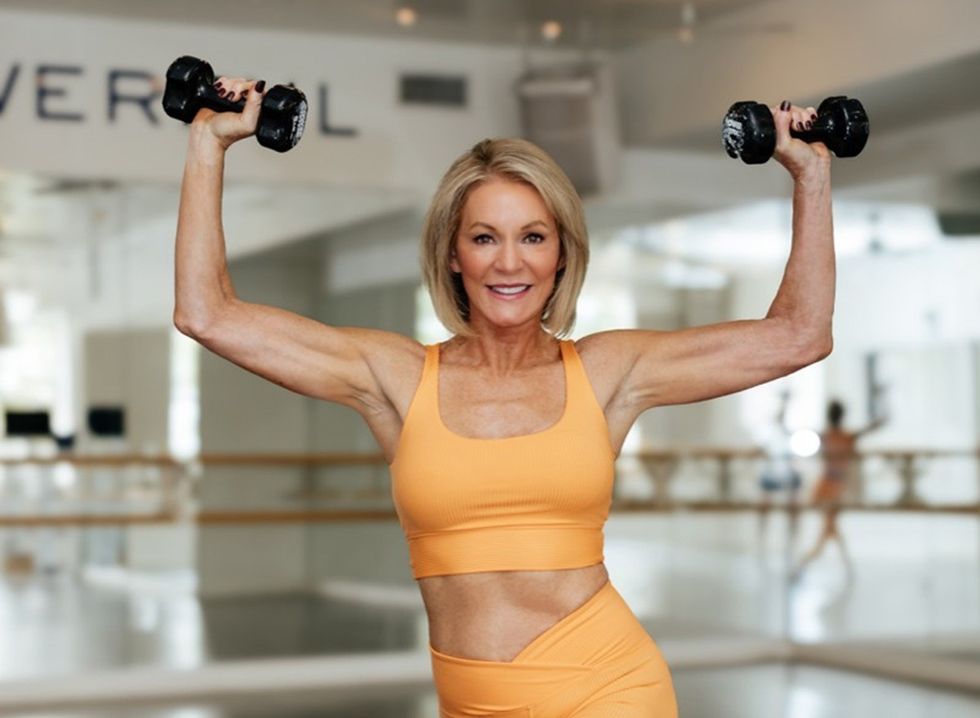 Liz Hilliard
Liz Hilliard Liz Hilliard
Liz Hilliard Shutterstock
Shutterstock Liz Hilliard
Liz Hilliard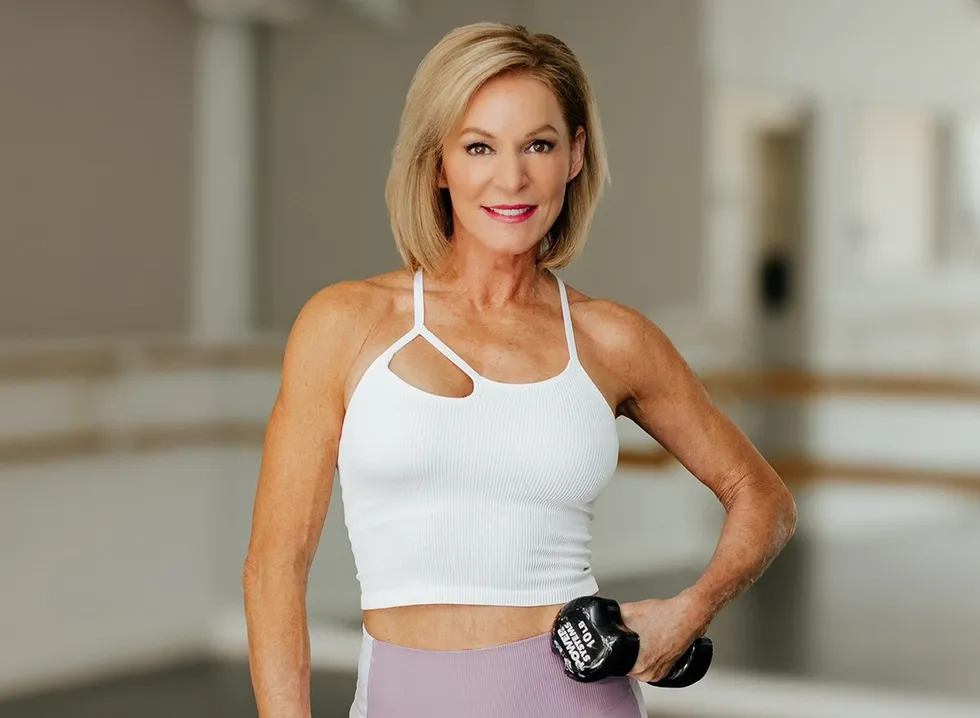 Liz Hilliard
Liz Hilliard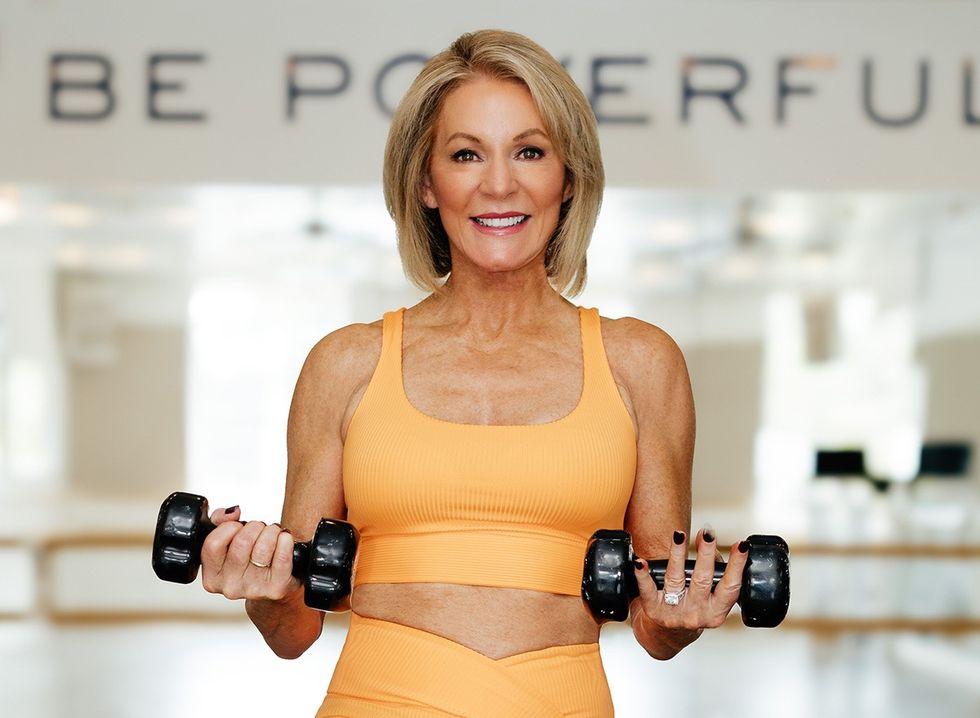 Liz Hilliard
Liz Hilliard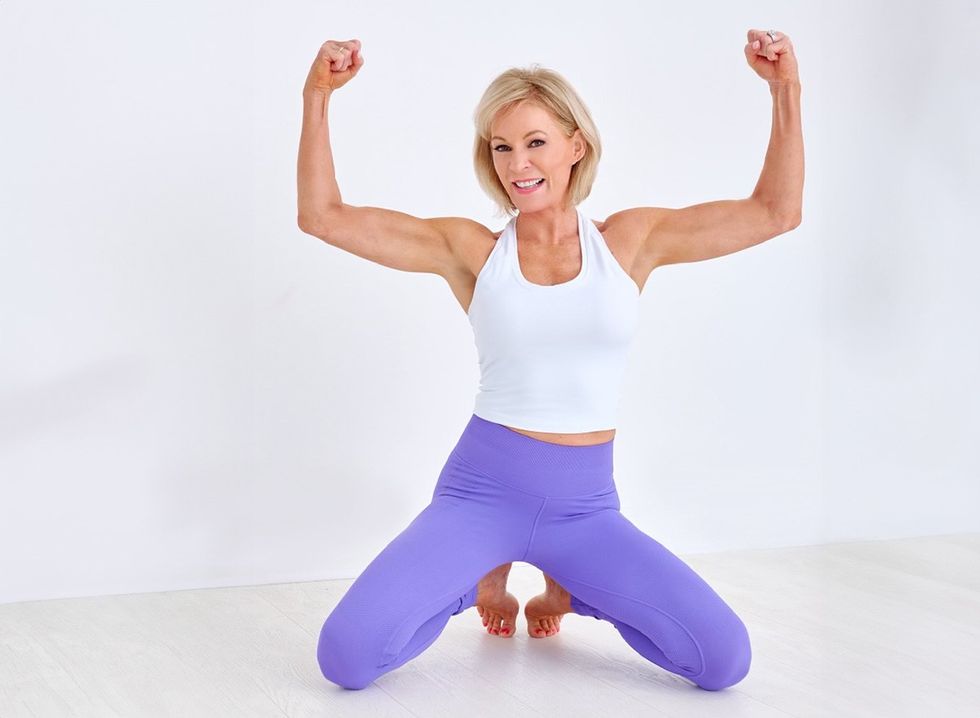 Liz Hilliard
Liz Hilliard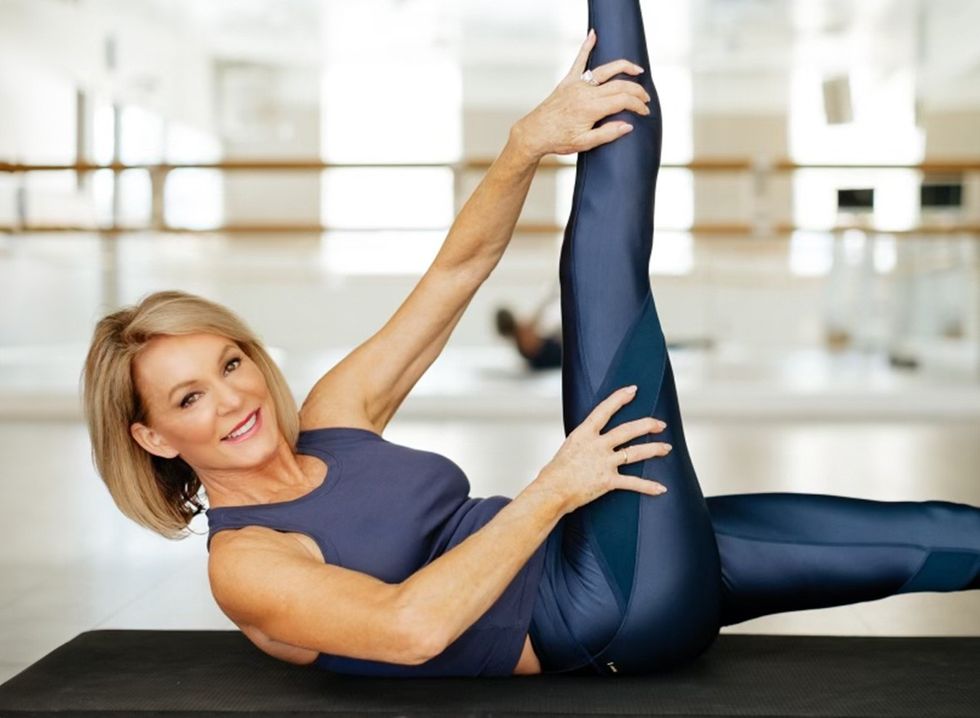 Liz Hilliard
Liz Hilliard Shutterstock
Shutterstock
 Shutterstock
Shutterstock Shutterstock
Shutterstock Shutterstock
Shutterstock Shutterstock
Shutterstock Shutterstock
Shutterstock Shutterstock
Shutterstock Shutterstock
Shutterstock Shutterstock
Shutterstock Shutterstock
Shutterstock Shutterstock
Shutterstock Shutterstock
Shutterstock Shutterstock
Shutterstock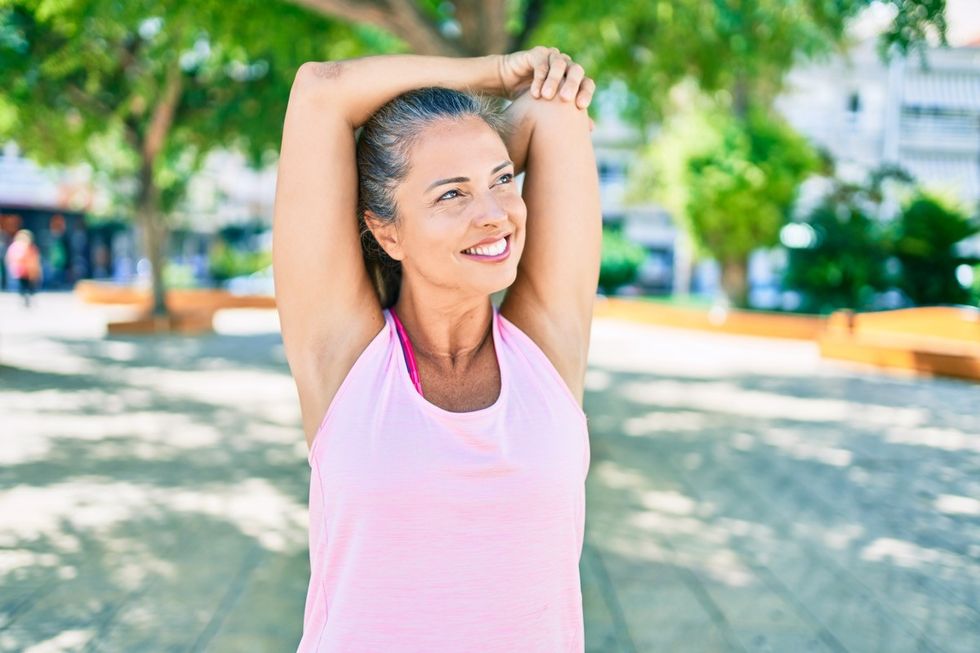 Shutterstock
Shutterstock Shutterstock
Shutterstock Shutterstock
Shutterstock
 Shutterstock
Shutterstock
 Shutterstock
Shutterstock Shutterstock
Shutterstock Shutterstock
Shutterstock Shutterstock
Shutterstock
 Shutterstock
Shutterstock Shutterstock
Shutterstock
 Shutterstock
Shutterstock Shutterstock
Shutterstock Shutterstock
Shutterstock Shutterstock
Shutterstock
 Shutterstock
Shutterstock Shutterstock
Shutterstock Shutterstock
Shutterstock Shutterstock
Shutterstock







